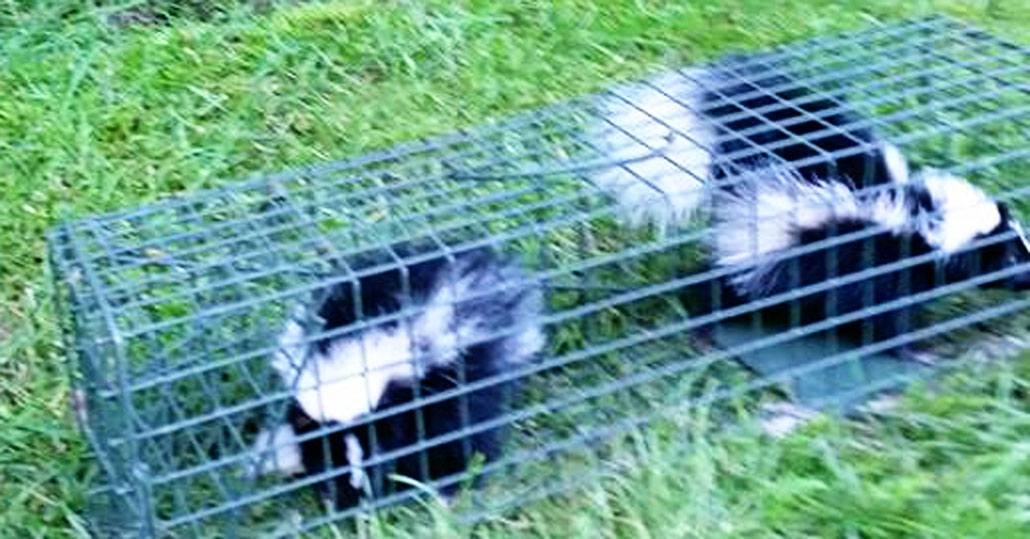- USA Wildlife Removal Education Guide - How to Exclude Skunks without Trapping Them
How to Exclude Skunks without Trapping Them

Exclusion funnels/tunnels can take different forms, with various size available. One popular example is a cage-like structure that is open on one end and equipped with a one-way door on the other, allowing the animal to exit, with the door snapping shut behind as it steps on a trigger plate. The devices normally have flanges on their building end that can be attached to the side of the structure, securing it and leaving the only outlet through the tunnel.
The other widely used type of excluder is a funnel-shaped tube of wire mesh that similarly attaches to the building, encircling the entry/exit portal and tapering as it extends away from the structure. As the animal leaves the building and enters the mesh tube, it is unable to turn around and must keep moving forward.
With the mesh restraining its body, the skunk is prevented it from turning around to reenter the building while remaining loose enough that the animal can proceed forward to freedom. Importantly, besides containing and directing the skunk’s progress, the close confines of the mesh tube also prevent it from raising its tail and issuing its barrage of scent.
For an exclusion tunnel to be effective it is important to conduct a thorough examination of the building and to patch any other potential exit/entry points with wood or with strong wire mesh. Once ensconced and nested, skunks usually don’t give up easily. They are powerful diggers and chewers and will make strong efforts to resume residence unless prevented from doing so.
In the exclusion process, it is important to determine whether there might be a litter of baby skunks inside. This can be done by observing the adult’s behavior for attempts to reenter the structure. If it suggest that there could be a litter inside, it’s best to let them mature until they leave with her at the age of about six weeks, then exclude them all at once.
And once you’re satisfied that you’ve evicted the skunk and her possible offspring, take measures to limit the supply and availability of the food that keeps them around.
If you need help, we service the entire USA! Click here for a wildlife removal specialist in your town!
Go back to the main Skunk Removal page for more information about How to Exclude Skunks without Trapping Them.
Read more articles about skunks in my educational articles. Learn the symptoms of a Sick Skunk and how to Protect Yourself from a Spraying Skunk. Find out if skunks shed their fur, about their Mating Habits, where they live, and if skunks run out of spray. I can show you how to know if you have a skunk under your shed or porch and how to get them out. Learn what wildlife rehabilitators do with skunks. Find out if all skunks have rabies and if a skunk that is active during the daytime rabid. Hear my thoughts on if you should should ever poison a skunk and even if skunks make good pets. Find out a Pest Control Company will remove a skunk. Read what you should do if you find an orphaned baby skunk or a nest of baby skunks. Read my thoughts on if you should Remove Skunks Yourself, and if mothballs or ammonia will help repel skunks.

